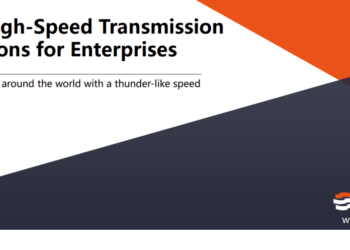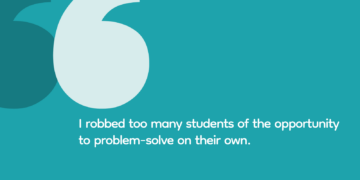Opinions expressed by Entrepreneur contributors are their own.
“The starting point for improvement is to recognize the need. This comes from recognition of a problem. If no problem is recognized, there is no recognition of the need for improvement. Complacency is the archenemy of kaizen.” —Masaaki Imai, Kaizen: The Key To Japan’s Competitive Success
The philosophy of kaizen — or continuous improvement — is a combination of two words: Kaimeaning change, and zenmeaning good. Although its origins can be traced back to the rebuilding effort that followed World War II, it became known in the West after Japanese organizational theorist Masaaki Imai released the book Kaizen: The Key To Japan’s Competitive Success in 1986.
The core concept behind kaizen is relatively simple: You can always make or do things better, even if they seem fine for now. It’s perhaps best known as one of pillars of the famous Toyota Way, but its reach extends far outside Japan. As just one example, beloved grocery chain Trader Joe’s has been practicing kaizen since 2007, when CEO John Bane adopted it in order to help the company expand.
It’s not a coincidence that continuous improvement is an integral part of so many companies’ philosophies. Still, it’s not always obvious how to implement it, especially when things seem to be going well.
Related: How to Sidestep Personal-Development Pitfalls as a New Entrepreneur
Address friction points
Back in 2004, email seemed like a solved problem. Sure, it was cumbersome — composing a message meant opening a new page, email addresses had to be entered manually, etc. — but it worked. More or less. It was better than snail mail, anyway, and for most people, that was good enough.
But “good enough” was not, well, good enough for Google, which at the time was busy securing its reputation as one of the most visionary companies in the world. Its April Fools Day press release for Gmail was first thought to be a prank, but it quickly became clear that the tech giant wasn’t messing around. Gmail handily crushed its competitors with its lightning-fast service, huge amounts of storage, email autocompletion and tidy interface.
As Google cofounder Larry Page tells it in the aforementioned press release, the inspiration for Gmail came from a user who complained about the poor quality of existing email. “She kvetched about spending all her time filing messages or trying to find them,” Page said. “And when she’s not doing that, she has to delete email like crazy to stay under the obligatory four megabyte limit. So she asked, ‘Can’t you people fix this?’”
Turns out, they could. Which leads me to the next point…
Make room for side projects
Adherents of kaizen know that continuous improvement requires deep thinking and creativity. It should come as no surprise, then, that many of our best known innovations — from the theory of relativity to Craigslist — began as side projects. Even my company, Jotform, was something I began working on during my free time outside my job as a programmer.
It’s well known that Google asks its employees to use 20 percent of their working hours to focus on a big picture project — unrelated to their day-to-day jobs — that they think will benefit the company. It was during this project time that developer Paul Buchheit dreamed up the idea for Gmail (which at the time he had titled “Caribou,” a reference to the cartoon Dilbert).
Doing the same thing, day in and day out, can put a real damper on creative thinking. If you’re the boss, consider giving your employees a designated amount of time to spend on non-day-job projects. At Jotform, we have hack weeks, which allow our product teams five uninterrupted days to plug away at a single problem or project. These weeks have not only resulted in some of our most important innovations, they’re also a great way to collaborate and think about things in a new way.
Related: How Managing Your Time Is a Waste of Time
Self-reflect
Practicing kaizen means never accepting the status quo. But in order to identify areas for growth, you have to be willing to acknowledge your pain points.
This is where many leaders fumble, says Deryl Sturdevant, a former executive at Toyota. Writing for McKinsey, Sturdevant explains that in many cases, executives aren’t as self-reflective or objective about evaluating their performance as they should be, and they tend to focus on the good things they’re doing instead. That doesn’t fly at Toyota, where “as soon as you start making a lot of progress toward a goal, the goal is changed and the carrot is moved,” Sturdevant says.
“It’s a deep part of the culture to create new challenges constantly and not to rest when you meet old ones,” he writes. “Only through honest self-reflection can senior executives learn to focus on the things that need improvement, learn how to close the gaps, and get to where they need to be as leaders.”
For a busy entrepreneur, it can be hard to find time for something as nebulous as self-reflection. But it is crucial. Set aside time to regularly check in with yourself and assess how well you’re meeting your goals, if your company is staying aligned with your values, and remembering your “why.” I’m also an advocate of journaling, which gives you space to empty the chatter from your mind and think more clearly about what’s working and what isn’t.
Be persistent
Gmail was in the works for years before it was finally released to the public. Regardless of if you’re innovating something big or streamlining existing operations, it’s important to remain focused on improving regardless of the obstacles.
Entrepreneurs tend to have persistence baked into their mindsets — after all, getting a business off the ground demands it. But it doesn’t end there. Continuous improvement means keeping that momentum after your business has launched, regardless of how well things are going. This will give you a competitive edge in the good times and the ability to change course when obstacles arise. No matter where you’re at, there is always room for growth.
Related: Your Success Is Determined By How Well You Can Embrace Change













